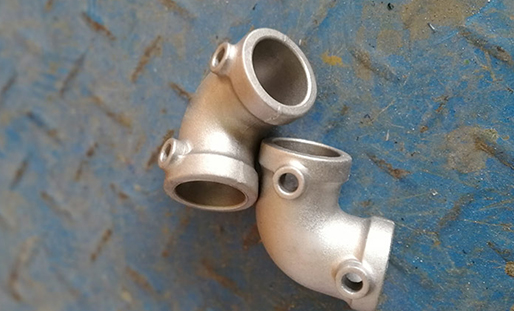Cast iron parts factory china share this article for you.
1. Gravity casting
Gravity casting refers to the process in which the molten metal is injected into the mold under the influence of the earth's gravity, also known as casting. Gravity casting in a broad sense includes sand casting, metal casting, investment casting, mud casting, etc.; narrow sense gravity casting refers specifically to metal casting.
2. Pressure casting
Pressure casting refers to the process in which the molten metal is injected into the mold under the action of other external forces (without gravity). The broad sense of pressure casting includes pressure casting and vacuum casting, low-pressure casting, centrifugal casting, etc. of the die casting machine; the narrow sense of pressure casting refers to the metal die-casting of the die casting machine, referred to as die casting. These casting processes are commonly used in non-ferrous metal casting. Our company provides high-quality die-casting aluminum parts.
3. Sand casting
Sand casting is a traditional casting process that uses sand as the main molding material to make castings.
Sand casting is generally gravity casting, and low-pressure casting, centrifugal casting, and other processes can also be used when there are special requirements. The adaptability of sand casting is very wide, small parts, large parts, simple parts, complex parts, single parts, large quantities can be used. Molds used for sand casting were previously made of wood, commonly known as wood molds. The disadvantage of wooden molds is that they are easily deformed and damaged; in addition to sand castings produced in a single piece, aluminum alloy molds or resin molds with high dimensional accuracy and long service life can be used. Although the price has increased, it is still much cheaper than the mold for metal mold casting, and the price advantage is particularly prominent in the production of small batches and large parts. In addition, sand molds have higher refractoriness than metal molds, so materials with higher melting points, such as copper alloys and ferrous metals, also use this process. However, sand casting also has some shortcomings: because each sand casting can only be poured once, the casting mold is damaged after the casting is obtained, and the molding is re-shaped, so the production efficiency of sand casting is low; and because the overall nature of the sand is soft Porous, so the dimensional accuracy of sand castings is low and the surface is rough.

Die-Casting Aluminum Parts
4. Special casting methods
Casting metal mold is a modern process of making heat-resistant alloy steel for making a hollow mold for casting.
The metal mold can be either gravity casting or pressure casting. The metal mold can be used repeatedly for many times. Each time a metal liquid is poured, a casting is obtained. The service life is very long and the production efficiency is very high. Metal castings not only have good dimensional accuracy and smooth surface, but also in the case of pouring the same metal liquid, the strength of the castings is higher than that of sand molds, and it is not easy to damage. Therefore, in the mass production of non-ferrous metal medium and small castings, as long as the melting point of the casting material is not too high, metal casting is generally preferred. However, metal mold casting also has some deficiencies: because the processing of heat-resistant alloy steel and making hollow cavities on it is relatively expensive, the cost of metal molds is expensive, but the overall cost is lower than that of die casting molds. too much. For small batch production, the cost of the mold allocated to each product is obviously too high and is generally not easy to accept. And because the metal mold is limited by the size of the mold material and the capacity of the cavity processing equipment and casting equipment, it is also powerless for particularly large castings. Therefore, in small batches and large parts production, metal casting is rarely used. In addition, although the metal mold uses heat-resistant alloy steel, its heat resistance is still limited. It is generally used for the casting of aluminum alloys, zinc alloys, and magnesium alloys. It has been rarely used in copper alloy casting but is used for ferrous metal casting. Less.